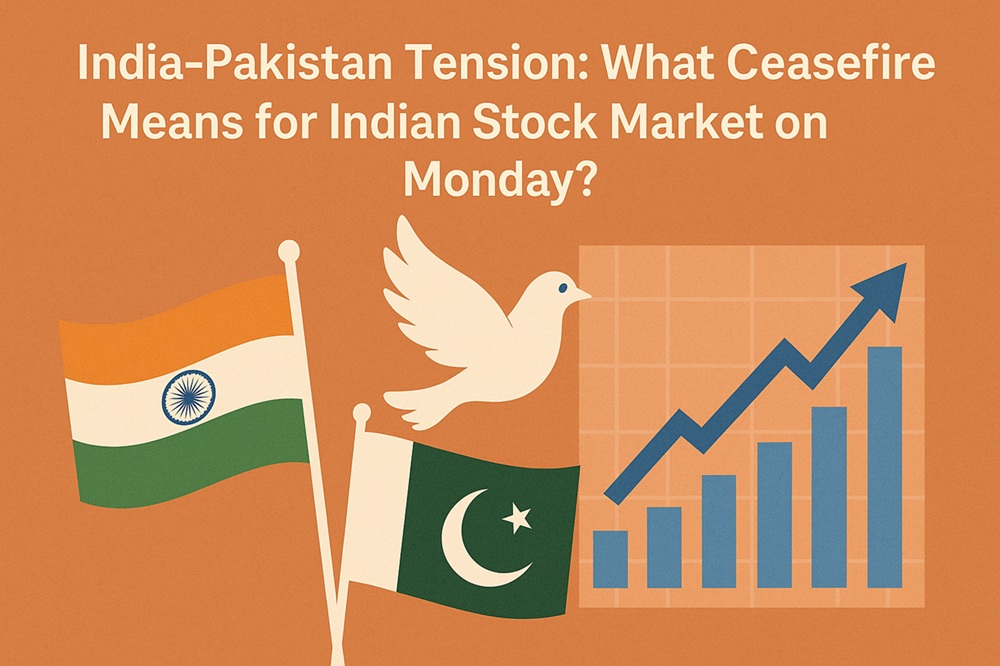Geopolitical tensions between India and Pakistan have historically influenced investor sentiment and market behavior. With recent reports indicating a ceasefire agreement or de-escalation along the Line of Control (LoC), market participants are closely watching how this development may impact the Indian stock market when trading resumes on Monday.
Ceasefire Impact: A Possible Relief Rally?
Ceasefire announcements or any step toward de-escalation typically reduce geopolitical risk premiums. This can spark a relief rally in equity markets, particularly in sectors that are sensitive to macro stability, such as:
-
Banking and Financial Services: These sectors often react positively to reduced volatility and risk.
-
Infrastructure and Defense: While defense-related stocks may see some cooling, infrastructure may benefit from a sense of regional stability.
-
Foreign Institutional Flows: Global investors often stay cautious during periods of military tension. A truce could renew confidence and lead to fresh inflows.
Historical Context: Markets Favor Stability
Past episodes—such as the 2003 ceasefire or the post-Kargil diplomatic thaw—show that markets typically react favorably when geopolitical tensions ease. However, sustained optimism depends on follow-through actions and the absence of renewed skirmishes or rhetoric.
Caution Still Lingers
While the immediate market reaction might be positive, investors are likely to remain cautious. Any ambiguity in the ceasefire's durability or lack of diplomatic progress may limit gains. Defensive sectors like FMCG and Pharma could continue to attract safe-haven interest if uncertainty persists.
Rupee and Bond Markets
The Indian Rupee may strengthen slightly due to lower geopolitical risk, while bond yields could fall modestly, especially if investors expect improved macro stability.
Bottom Line
If the ceasefire holds, expect a modestly positive open on Monday, driven by improved investor sentiment and reduced geopolitical overhang. However, market sustainability will depend on clarity, continuity in diplomatic efforts, and how global cues evolve in parallel.
